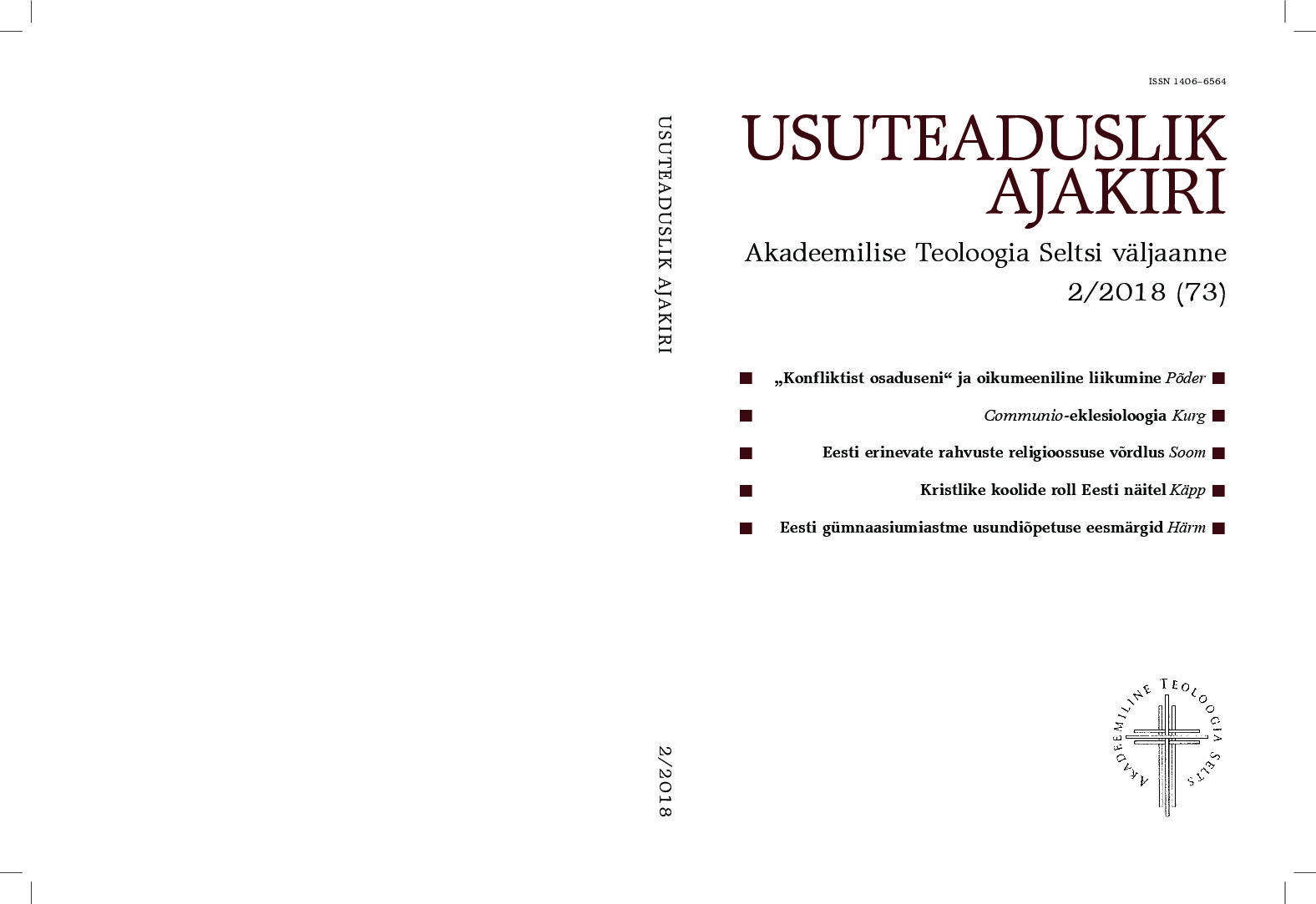Communio-eklesioloogia – katoliiklaste ihalus osaduse järele
Communion Ecclesiology
Author(s): Ingmar KurgSubject(s): Christian Theology and Religion, History of Church(es), Systematic Theology, Pastoral Theology
Published by: Akadeemiline Teoloogia Selts
Keywords: Catholicism; Ecclesiology; Communio; Liturgical Movement; II Vatican council;
Summary/Abstract: Communion ecclesiology, being prepared by the Catholic theologians during the years 1930–1940, had been the central idea of the Second Vatican Council and was approved as such by the Second Extraordinary General Assembly of the Synod of Bishops in 1985. If Church is to be characterized as a communion, it means communion with God through Jesus Christ in the Holy Spirit; on this basis is also built the communion between all Christians and the organization of the ecclesial life. This idea of communion instigated both changes inside the church buildings (Inter Oecumenici Instruction, 1964) as well as the new liturgy (Missale Romanum, 1970) that was supposed to realize the principle of the so-called participatio actuosa – “full, conscious and active” participation of the people of God (Constitution Sacrosanctum concilium, 1963) in the liturgy. In the Roman Curia the main leader of the idea of communion ecclesiology was Cardinal Walter Kasper. He explained and defended the unity of Christians in “reconciled diversity”, both in the Roman Catholic Church, ad intra, as well as in inter-confessional communion of churches, ad extra. For Roman Catholics the ecumenical intention of communion ecclesiology lies in the question of how the churches, nations and world will be united to Jesus Christ.
Journal: Usuteaduslik Ajakiri
- Issue Year: 2018
- Issue No: 2 (73)
- Page Range: 30-67
- Page Count: 38
- Language: Estonian

